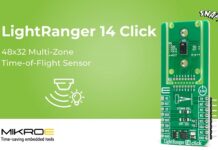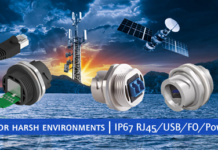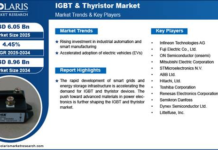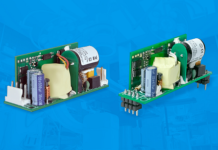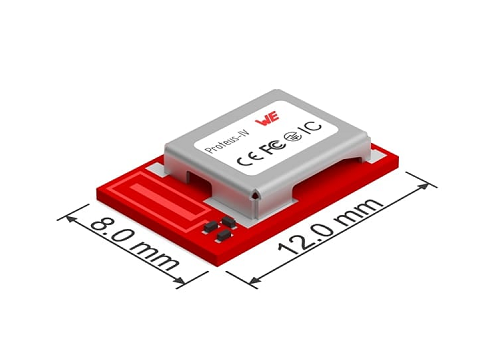
Wireless modules powered by Nordic nRF54L15 SoC:
Germany-based developer of electronic and electromechanical components, Würth Elektronik, will launch high-performance RF modules based on Nordic Semiconductor’s next generation of wireless SoCs, the nRF54L Series. The ‘Ophelia-IV’ and ‘Proteus-IV’ radio modules are designed, manufactured, and tested in Germany, and can be used globally for all types of wireless IoT applications.
The two modules are built on the same hardware platform in a compact 8 by 12 by 2.3 mm form factor featuring the Wafer-Level Chip Scale Package (WLCSP) version of Nordic’s next generation nRF54L15 SoC. The nRF54L15 integrates a 128 MHz Arm® Cortex®-M33 processor, a RISC-V co-processor, and an ultra-low power multiprotocol 2.4 GHz radio providing multiprotocol connectivity including Bluetooth® LE, Thread, Zigbee, Matter, and IEEE 802.15.4 (depending on firmware). Both Ophelia-IV and Proteus-IV implement a smart antenna selection feature, which allows developers to connect either an external antenna or use the integrated PCB antenna.
Flexible development with nRF Connect SDK
Ophelia-IV provides a flexible development platform without pre-installed firmware. It features 29 GPIOs and is ideal for custom firmware development using the Nordic nRF Connect SDK (Software Development Kit) and Zephyr RTOS. Bluetooth LE and other protocols can be integrated depending on project requirements. A Flash service is also offered for this module, in which the the module is directly programmed and tested with the required firmware.
Proteus-IV is a ready-to-use Bluetooth LE module with pre-installed firmware. It supports Bluetooth 6.0 and enables fast integration into various applications that need to be developed within a short timeframe. It is a highly configurable and flexible module designed to ease the use of Bluetooth technology for customer applications. The Bluetooth LE functions can be controlled by an external host controller via UART. Its adaptable feature set enables customers to fine-tune a range of parameters such as multiconnect, central and peripheral role, Bluetooth security modes, UART settings, as well as Bluetooth connection parameters. The interface to the host can be configured to operate in either transparent or command mode, where the transparent mode enables seamless data transmission.
Reduced cost and time to market
“Ophelia-IV is best suited to applications where standalone operation plays the most important role, as the microcontroller on the chip is able to also host the end application,” explains Ravindra Singh, Product Manager, Wireless Connectivity and Sensors at Würth Elektronik. “As a pre-certified module, Proteus-IV significantly reduces the time to market and cost for the end device. Both Ophelia-IV and Proteus-IV use the WLCSP version of the Nordic chipset, so the size of the radio module is reduced making them suitable for space-constrained applications.
“We have an existing strong partnership with Nordic Semiconductor through our previous generation 2.4 GHz radio modules,” adds Singh. “The nRF54L Series SoCs are state-of-the-art with regards to power efficiency and performance, with the nRF54L15 variant standing out for its excellent cost-to-performance ratio, as it is also able to host custom application code, the Bluetooth stack, and firmware over-the-air [FOTA] functionality at the same time.”




